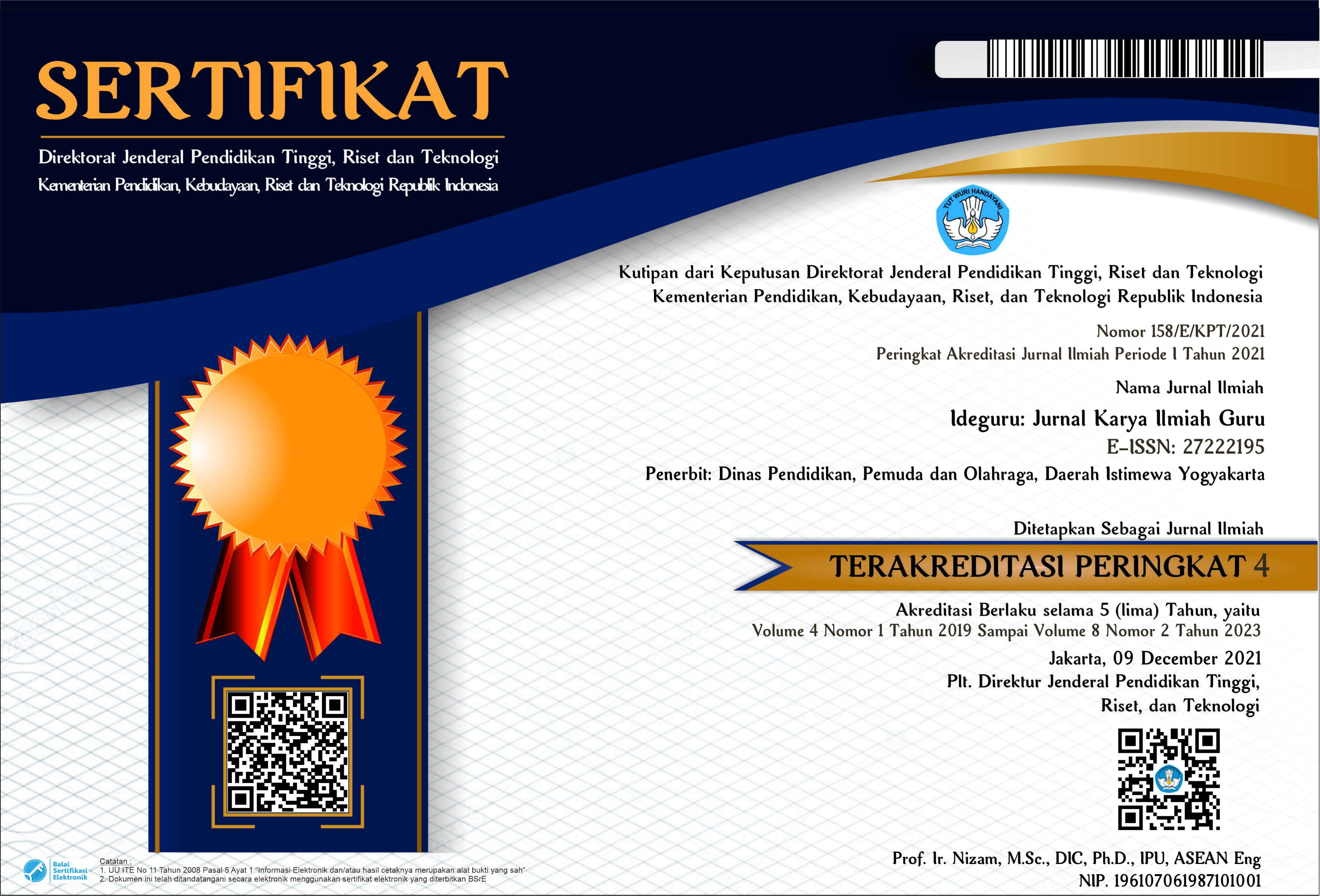Integration of Critical and Creative Thinking Skills in Solving HOTS Questions through the SOLE Model on Counting Rules
Abstract
One of the provisions of student to be able to answer the challenges of the 21st century is to be able to integrate critical and creative thinking skills in solving problems. The purpose of study was to determine the increase in integration of students’ critical and creative thinking through HOTS questions using the Self-Organized Learning Environments model in the Counting Rules learning topic at SMA Negeri 1 Yogyakarta. This classroom action research was carried out in two cycles, in which cycle consisted of planning, action, observation, and reflection. This study uses three stages in the SOLE model, namely Question, Investigate, and Review. Giving inquiry questions followed by the application of students’ knowledge in interesting and directed tasks in the student worksheets to increase curiosity and provoke students to start using their critical thinking skills. Solving LOTS, MOTS, and HOTS problem solving gradually train students to integrate critical and creative thinking skills. Each group presents the results of their exploration and investigation to improve the integration of critical and creative thinking skills of students. The result of observations on integration of critical thinking show that 15,63% of students are in very high criteria and 84,73% in high criteria. The same result is shown in the integration of creative thinking skills. The achievement test of student learning outcomes in the aspect of knowledge and skills is 87,50%. In this study also obtained the result of the implementation of learning is 93,33%. This research concludes that there is an increase in the integration of students’ critical and creative thinking skills in the Counting Rules.
PDF Downloads
Copyright (c) 2022 Muflichati Nurin Azizah

This work is licensed under a Creative Commons Attribution 4.0 International License.

 DOI:
DOI:














